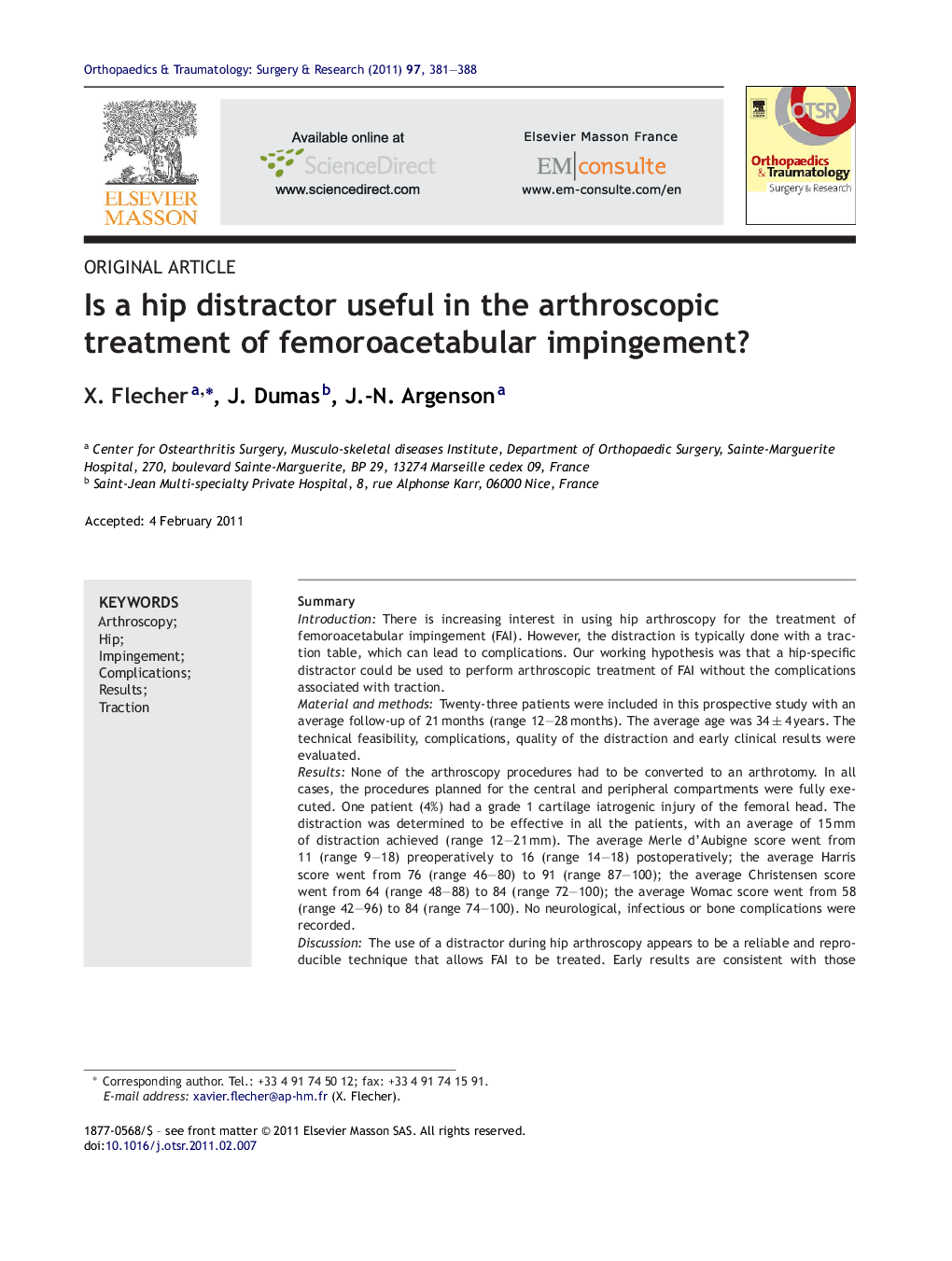| Article ID | Journal | Published Year | Pages | File Type |
|---|---|---|---|---|
| 4082160 | Orthopaedics & Traumatology: Surgery & Research | 2011 | 8 Pages |
SummaryIntroductionThere is increasing interest in using hip arthroscopy for the treatment of femoroacetabular impingement (FAI). However, the distraction is typically done with a traction table, which can lead to complications. Our working hypothesis was that a hip-specific distractor could be used to perform arthroscopic treatment of FAI without the complications associated with traction.Material and methodsTwenty-three patients were included in this prospective study with an average follow-up of 21 months (range 12–28 months). The average age was 34 ± 4 years. The technical feasibility, complications, quality of the distraction and early clinical results were evaluated.ResultsNone of the arthroscopy procedures had to be converted to an arthrotomy. In all cases, the procedures planned for the central and peripheral compartments were fully executed. One patient (4%) had a grade 1 cartilage iatrogenic injury of the femoral head. The distraction was determined to be effective in all the patients, with an average of 15 mm of distraction achieved (range 12–21 mm). The average Merle d’Aubigne score went from 11 (range 9–18) preoperatively to 16 (range 14–18) postoperatively; the average Harris score went from 76 (range 46–80) to 91 (range 87–100); the average Christensen score went from 64 (range 48–88) to 84 (range 72–100); the average Womac score went from 58 (range 42–96) to 84 (range 74–100). No neurological, infectious or bone complications were recorded.DiscussionThe use of a distractor during hip arthroscopy appears to be a reliable and reproducible technique that allows FAI to be treated. Early results are consistent with those reported in the literature, and the risks associated with the use of a traction table are reduced. This technique makes hip arthroscopy safer and contributes to advances in labrum and cartilage repair, without additional complications.Level of evidenceLevel III prospective study.
